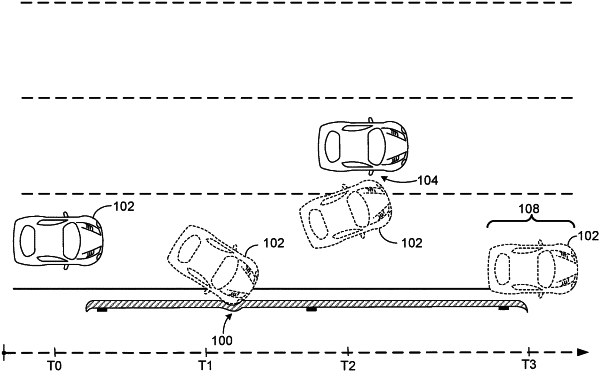| CPC B60R 21/0132 (2013.01) [G07C 5/008 (2013.01); B60R 2021/0027 (2013.01); B60R 2021/01088 (2013.01); B60R 2021/01252 (2013.01); B60R 2021/01325 (2013.01); G07C 5/0816 (2013.01)] | 20 Claims |

|
1. A computer-implemented method for reporting a potential vehicle crash, the method comprising:
receiving, by at least one processor and from a storage device, telematics data produced by a plurality of sensors at a vehicle, wherein the plurality of sensors comprise a pressure sensor and a position sensor, and wherein the telematics data comprises a pressure within the vehicle produced by the pressure sensor and a position of the vehicle produced by the position sensor;
identifying, by the at least one processor and based on the telematics data, a start time of the potential vehicle crash and an end time of the potential vehicle crash;
processing, by the at least one processor, a portion of the telematics data produced between the start time and the end time of the potential vehicle crash to determine whether an airbag associated with the vehicle was deployed during the potential vehicle crash, including:
computing, by the at least one processor, a first rate of altitude change based on the pressure within the vehicle produced by the pressure sensor;
computing, by the at least one processor, a second rate of altitude change based on the position of the vehicle produced by the position sensor;
computing, by the at least one processor, a difference between the first rate of altitude change and the second rate of altitude change; and
determining, by the at least one processor, whether the airbag associated with the vehicle was deployed during the potential vehicle crash by comparing the difference with a predetermined threshold;
generating, by the at least one processor, a report of the potential vehicle crash, the report including an indication of whether the airbag associated with the vehicle was deployed during the potential vehicle crash; and
transmitting the report to a device for analysis of the potential vehicle crash or a driver of the vehicle during the potential vehicle crash.
|